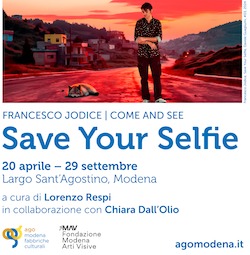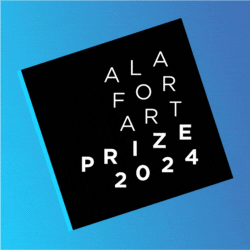[nemus_slider id=”63427″]
—
English text below
Mi rivolsi al mio ospite, che aveva preso posto su un comodo divano. “Ecco una biblioteca che formerebbe il vanto di parecchi palazzi sulla terra, capitano” dissi. “Mi stupisce molto il fatto che siate riuscito a portarla con voi nelle profondità dei mari.”
“Dove si potrebbe trovare una maggiore solitudine e un maggior silenzio, professore?” replicò il capitano Nemo. “Forse che la sala di lettura del vostro Museo vi offre altrettanta tranquillità?”
“No, signore, e devo aggiungere che è ben misera cosa rispetto alla vostra. Qui ci saranno almeno sei o settemila volumi…” “Dodicimila, per la precisione. Sono i soli legami che mi uniscono ancora alla terra. Ma il mondo finì per me il giorno in cui il Nautilus si immerse per la prima volta sotto la superficie del mare. Quel giorno acquistai i miei ultimi volumi, le ultime riviste, gli ultimi giornali. Da quel momento preferisco credere che l’umanità non abbia più né pensato né scritto.”
Questo l’incipit – tratto da “Ventimila leghe sotto i mari”, a sua volta citato in “Brevi note sull’arte e il modo di riordinare i propri libri” di Georges Perec – della mostra Nautilus – Part 1 ospitata fino al 3 marzo negli spazi di Marsèlleria a Milano. La curatrice Zoe De Luca, ha scelto gli ardi temi della classificazione e catalogazione per indagare, con un idea più allargata, un concetto ancora più scivoloso: quello della globalizzazione, “un’altra grande fonte di dibattito culturale dei nostri tempi”.
La mostra presente le opere di Mishka Henner, Malaxa (Alicia Mersy & Tabita Rezaire), Luca Pozzi, Elena Radice, Clement Valla e Guan Xiao.
Seguono alcune domande alla curatrice.
ATP: Il preludio della mostra è una doppia citazione: Perec che fa riferimento a un dialogo tratto da Ventimila leghe sotto i mari. Il dilemma ruota attorno a come tener aggiornata un’immensa biblioteca con le ultime pubblicazioni. Che analogia c’è tra questa citazioni e la mostra che curi negli spazi di Marsèlleria?
Zoe De Luca: L’interrogativo principale di NAUTILUS Part 1 è il modo in cui facciamo esperienza della cultura documentata nella contemporaneità. L’insieme di informazioni appare illimitato e disponibile: prima d’ora non avevamo mai avuto una tale libertà, eppure questa massa digitalizzata e iperconnessa ci mette di fronte a una condizione quasi paradossale – maggiore è il potenziale, maggiore è la difficoltà di approccio. Come confrontarci con l’universo sterminato al quale abbiamo finalmente accesso? “[…] il mondo finì per me il giorno in cui il Nautilus si immerse per la prima volta sotto la superficie del mare. Quel giorno acquistai i miei ultimi volumi, le ultime riviste, gli ultimi giornali. Da quel momento preferisco credere che l’umanità non abbia più né pensato né scritto.” Questa frase di Capitano Nemo va quindi letta come uno statement utopista, una provocazione in risposta al dilemma dell’inafferrabilità del mondo che ci circonda, del confronto con un’entità che possiamo a malapena concepire o che non sappiamo da che prospettiva guardare. Questa mostra vuole affrontare sia la chimera dell’archivio ultimo, sia quella dell’esperienza collettiva filtrata dai parametri imposti, che spesso hanno escluso forme di cultura minori e oppresse – le stesse che il capitano Nemo intende vendicare con le sue spedizioni a bordo del sottomarino Nautilus dove viaggia in solitudine, accompagnato dalla sua leggendaria biblioteca.
ATP: Su che base hai scelto gli artisti selezionati? Seguendo la loro ricerca, proponendo loro un tema da elaborare o scegliendo una loro opera calzante con le tue riflessioni?
ZDL: I sei artisti in mostra sono stati scelti per i temi e l’approccio con cui lavorano: ognuno di loro è diverso ma complementare nell’ottica di questa collettiva eterogenea, in quanto rappresenta uno dei tanti aspetti che si diramano dalla suggestione iniziale. Alcuni sono stati scelti per un’opera specifica, come Mishka Henner, che in Astronomical (2011) ha riprodotto un modello in scala del Sistema Solare in una pubblicazione editoriale, della quale ogni facciata corrisponde a 1 milione di chilometri, per un totale di 6.000 pagine; la quasi totalità dei fogli è stampata in nero e di rado viene interrotta dalla presenza di un pianeta o satellite, rendendo la lettura dei dodici volumi uno sforzo surreale di misurare la concezione umana dello spazio conosciuto. Altri invece sono invece stati scelti perchè la loro intera pratica rispecchia questo atteggiamento indagatore; come nel caso di Luca Pozzi che, seguendo il progresso di fisica e tecnologia in parallelo alla sua ricerca, mette in discussione la rappresentazione e la fruizione dell’opera d’arte riattualizzando l’approccio artistico dell’Umanesimo Rinascimentale. Tutte le opere esposte sono state realizzate negli ultimi cinque anni, ad eccezione di Free Canon / Controversial Freedom (2015) di Elena Radice, un lavoro sonoro che per l’occasione è stato esposto con un’installazione immersiva più strutturata e inedita, e l’intervento site specific di Malaxa, realizzato appositamente sul tema di NAUTILUS Part 1.
ATP: Le opere degli artisti abbracciano un più ampio spettro di questioni: tradizione e memoria, la conservazione e ricostruzione della storia mondiale, la fruizione attraverso il tempo. Mi fai un paio di esempi ‘pratici’ che si relazionino con questi temi?
ZDL: Le opere più rappresentative del dualismo che caratterizza la figura di Capitano Nemo – da una parte l’utopia dell’archivio massimo, dall’altra la rivendicazione delle culture dimenticate – sono probabilmente Cognitive Shape di Guan Xiao e She Power(s) di Malaxa. La ricerca di Guan Xiao è incentrata sui processi di documentazione visiva, e il suo lavoro si interroga sul ruolo della natura umana in questo sistema di informazioni così vasto e stratificato. Il video a tre canali in mostra sintetizza bene la sua pratica: Cognitive Shape è un susseguirsi di frammenti video provenienti da YouTube, che accostano i materiali di repertorio più svariati palesando la nostra impossibilità di fruire una realtà così complessa e di confrontarci con essa – come paradossalmente tenta di fare l’artista stessa, raccontandola in questo video. Invece Malaxa (progetto di Alicia Mersy e Tabita Rezaire) è uno studio di comunicazione la cui missione è fornire i classici servizi di art direction e produzione, concepite però da una prospettiva non eurocentrica e sfidando la cultura visuale dominante, veicolata da capitalismo e patriarcato. She Power(s) è una carta da parati site-specific, manifesto di Malaxa. La grafica è incorniciata dal finestrino di un’auto in corsa, che si apre su un paesaggio in costante mutamento e su uno specchietto retrovisore che guarda indietro e quindi alla storia: lo scenario metafisico raccoglie personaggi della cultura dimenticate o sottovalutate – da Shadia Mansour, prima rapper donna e araba, a Pepper LaBeija, iconica drag queen e fashion designer newyorkese.
ATP: Un altro snodo concettuale della mostra è legato alla globalizzazione. Che corrispondenza – o tensione – trovi tra questo ingombrante e ambiguo concetto, con il tema dell’archiviazione?
ZDL: Si tratta di una corrispondenza tanto quanto di una tensione: la globalizzazione è, in questa sede, il comune denominatore tra la nostra percezione della cultura, la cui prospettiva è sempre stata deformata da filtri storici e politici, e l’apparente democratizzazione di questa scrematura di dati, che ha reso superficiale il nostro modo di beneficiarne. Questo processo tocca entrambi gli aspetti ed è la causa del loro appiattimento, del semplicismo con cui ci interfacciamo con la realtà che ci circonda o ci ha preceduto. Il trait d’union dei lavori esposti in NAUTILUS Part 1 è dunque il desiderio di andare in profondità, sostenere altre visioni accettandone complessità e sfide.

NAUTILUS – PART 1
“Captain Nemo,” I told my host, who had just stretched out on a couch, “this is a library that would do credit to more than one continental pa- lace, and I truly marvel to think it can go with you into the deepest seas.”“Where could one find greater silence or solitude, professor?” Captain Nemo replied. “Did your study at the museum afford you such a perfect retreat?”
“No, sir, and I might add that it’s quite a humble one next to yours. You own 6,000 or 7,000 volumes here…”“12,000, Professor Aronnax. They’re my sole remaining ties with dry land. But I was done with the shore the day my Nautilus submerged for the first time under the waters. That day I purchased my last volumes, my last pamphlets, my last newspapers, and ever since I’ve chosen to be- lieve that humanity no longer thinks or writes. In any event, professor, these books are at your disposal, and you may use them freely.”This dialogue from Twenty Thousand Leagues Under the Sea was a reference point in Georges Perec’s Brief Notes on the Art and Manner of Arranging One’s Books, in a chapter dedicated to the challenge of keeping a limi- ted number of volumes in one’s library.
Artists: Mishka Henner, Malaxa (Alicia Mersy & Tabita Rezaire), Luca Pozzi, Elena Radice, Clement Valla, Guan Xiao curated by Zoe De Luca
Until 03rd March 2017 – Marsèlleria, via privata Rezia 2 Milano
We asked some questions to the curator —
ATP: The prelude for the exhibition is a double quote: Perec who refers to a dialogue drawn from 20,000 Leagues Under The Sea. The dilemma turns around how to keep an immense library up to date with the latest publications. Which analogy do you find between this quote and the exhibition you are curating in the spaces of Marsèlleria?
Zoe De Luca: The main question behind NAUTILUS Part 1 is the way we experience the documented culture in our contemporaneity. The mass of information seems unlimited and available: before these times we never had such a freedom, yet this digitized and hyper-connected totality sets us before an almost paradoxical condition – greater the potential, greater the difficulty of approach. How can we face the endless universe, which we can now finally enter? “[…] I was done with the shore the day my Nautilus submerged for the first time under the waters. That day I purchased my last volumes, my last pamphlets, my last newspapers, and ever since I’ve chosen to believe that humanity no longer thinks or writes.” This sentence by Captain Nemo has to be read as an Utopian statement, a provocation responding to the dilemma of elusiveness of the surrounding world, to the match with an entity which we can barely conceive or something we do not know from which perspective we should watch .
This exhibition aims to deal with both the chimera of the ultimate archive and the collective experience filtered by imposed parameters, which often excluded minor and oppressed cultural expressions – the same that Captain Nemo wants to avenge with his expeditions on board of the submarine Nautilus where he travels alone, accompanied by his legendary library.
ATP: On which basis did you choose the selected artists? Following their research, proposing them a topic to develop or choosing a work by them which was apt to your reflections?
ZDL: The six artists involved in the exhibition were chosen for the topics and the approach with which they work: everyone is different but complementary in the viewpoint of this heterogeneous group show, as he or she represents one of the several aspects that branch off the starting suggestion. Some of them were chosen for a specific work, like Mishka Henner, who, in Astronomical (2011), reproduced a scale model of the Solar system in an editorial publication, of which every page corresponds to a million km, for an amount of 6000 pages; almost every page is printed black and only at some points this darkness is interrupted by the presence of a planet or a satellite, making the reading of the twelve volumes a surreal effort to measure the human conception of the known space. Some others were chosen because their entire practice mirrors this searching attitude; this is the case of Luca Pozzi who, following the evolution of physics and technology parallel to his research, calls into question representation and fruition of the work of art, re-actualizing the artistic approach of Renaissance Humanism. The whole body of exhibited works were realized in the last five years, except for Free Canon / Controversial Freedom (2015) by Elena Radice, a sound piece that, for this show, has been exposed through an immersive installation, never seen before and more structured, and the site-specific intervention of Malaxa, which was especially created for the topic of NAUTILUS Part 1.
ATP: The works of the artists encompass a wider range of questions: tradition and memory, conservation and reconstruction of world history, fruition through time. Could you tell me some practical examples that relate to these themes?
ZDL: The works which are more representative of the dualism portraying the character of Captain Nemo – on the one hand the utopia of the maximum archive, on the other hand the claim of forgotten cultures – are probably Cognitive Shape by Guan Xiao and She Power(s) by Malaxa. The research of Guan Xiao is centered on the process of visual documentation, and her work questions the role of human nature in this ample and stratified system of information. The three-channel video on show synthesizes very well her practice: Cognitive Shape is a sequence of video fragments coming from YouTube, which pulls together diverse inventory images revealing our impossibility of enjoying such a complex reality and relating with it – as paradoxically as the artist herself is trying to do, illustrating it in this video. Malaxa (a project by Alicia Mersy and Tabita Rezaire) instead is a communication studio which mission is to supply classical services as art direction and production, but conceived from a non-Eurocentric point a view and challenging the dominant visual culture, driven by capitalism and patriarchy. She Power(s) is site-specific wallpaper, a manifesto by Malaxa. The graphics is framed by a window of a speeding car, which is open on an ever-changing landscape and on a rear-view mirror looking backwards to history: the metaphysical scenery gathers forgotten or underestimated cultural personalities – from Shadia Mansour, the first female Arab rapper, to Pepper LaBeija, iconic drag queen and fashion designer from NY.
ATP: Another conceptual turning point of the exhibition is tied to globalization. Which conformity – or tension – do you find between this ambiguous and lumbering concept and the topic of archiving?
ZDL: This is a correspondence and a tension together: globalization is, herein, the common denominator of our perception of culture, which point of view is always warped by historical and political filters, and the apparent democratization of this data skimming, that made our way to take advantage of it superficial. This process touches both aspects and it is the cause of their flattening, of the simplicity with which we approach our surrounding reality or the one that preceded us. The trait d’union of the works exhibited in NAUTILUS Part 1 is then the wish to go deep, supporting other visions and accepting their complexities and challenges.













